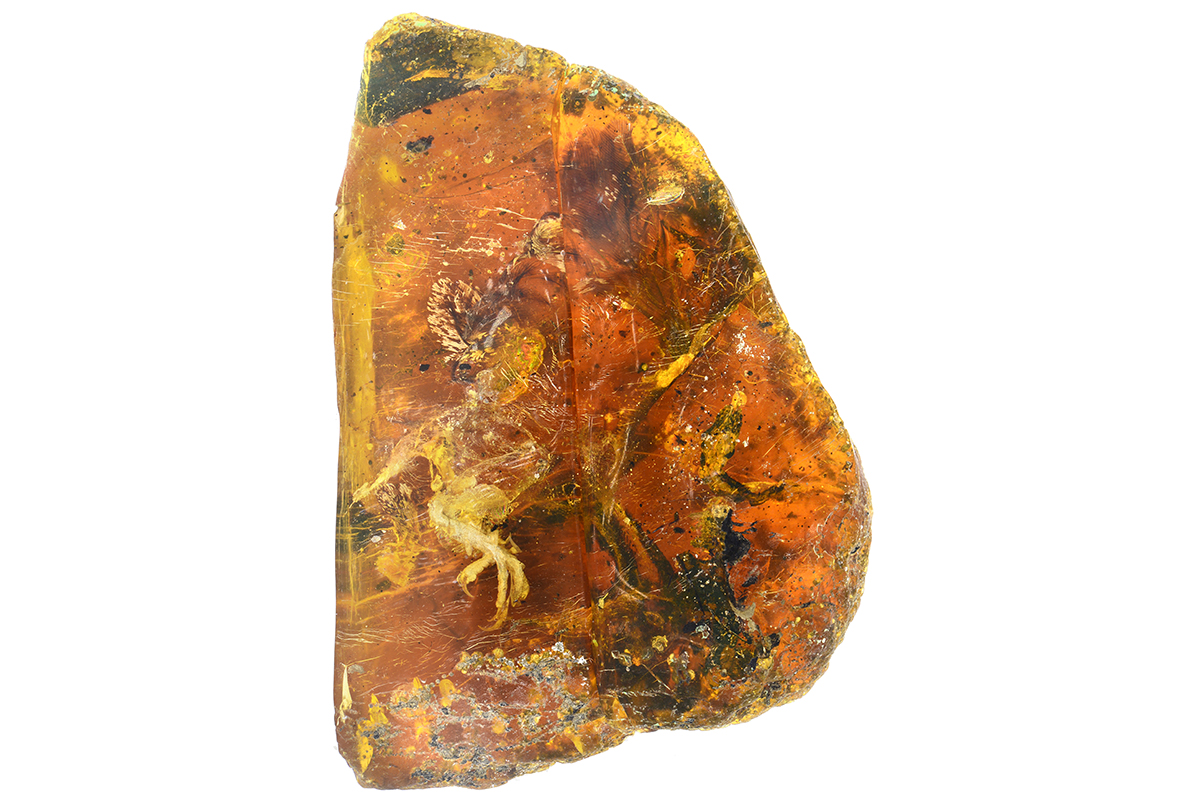100-Million-Year-Old Amber Holds Tiny, Feathery Chick

Much of the body of a wee Cretaceous-era chick was preserved in incredible detail in a piece of Burmese amber, and bears "unusual plumage," according to the researchers who described the unique find in a new study.
Excavated from a mine in what is now northern Myanmar, the precious lump of fossilized tree sap is estimated to be about 98 million years old, and holds the most complete specimen to date representing a group of extinct toothed birds called enantiornithines (eh-nan-tee-or-NITH'-eh-neez), which died out at the end of the Cretaceous period (about 145 million to 65.5 million years ago).
Body proportions and plumage development in the tiny specimen indicated that it was very young, while details in the feathers' structures and distribution highlighted some of the key differences between these ancient avians and modern-day birds, the scientists wrote in the study. [See Stunning Photos of the Cretaceous Chick in Amber]
Though scientists had previously found specimens of this bird group in amber, the new find included features never seen before, such as the ear opening, the eyelid and skin on the feet.
Its body measured about 2.4 inches (6 centimeters) in length, from the tip of its beak to the end of the truncated tail. The scientists used micro-CT scans and digital 3D reconstruction to further analyze the specimen — processes that took nearly a year to complete, study co-author Jingmai O'Connor, a professor with the Institute of Vertebrate Paleontology and Paleoanthropology at the Chinese Academy of Sciences, told Live Science in an email.
The amber chunk — which measured around 3.4 inches (8.6 cm) long, 1.2 inches (3 cm) wide and 2.2 inches (5.7 cm) thick— had been divided down the middle into two pieces. Unfortunately, this cut sliced through the specimen's skull, damaging some of the bones and relegating the chick's beak to one amber fragment and the braincase and neck to the other, the researchers reported.
Even so, the body was near-complete, with the amber containing the tiny bird's head and neck, part of its wings, feet and tail; and plenty of soft tissue and attached feathers. The bird was undergoing its first molt when it became caught in the sticky tree sap; there was only a light covering of plumage on its body. But it already had a full set of flight feathers on its wings, suggesting that birds in this group were highly independent from an early age, the study authors wrote.
Get the world’s most fascinating discoveries delivered straight to your inbox.
In recent years, amber fossils have revealed fascinating glimpses of life from many millions of years ago — from ant-termite warfare and a daddy longlegs' long-lasting erection to a spider attacking prey in its web and a bug that jumped out of its skin.
And when it comes to birds, fossils' exceptional preservation of plumage helps paleontologists understand the diversity of feathers and the role they played for early avians, O'Connor said in the email.
"Feathers can never be well understood in normal fossils," O'Connor said. "But in amber, we get crystal-clear views of what primitive feathers were like, and they reveal all sorts of bizarre morphologies," she said.
The findings were published online June 6 in the journal Gondwana Research.
Original article on Live Science.

Mindy Weisberger is a science journalist and author of "Rise of the Zombie Bugs: The Surprising Science of Parasitic Mind-Control" (Hopkins Press). She formerly edited for Scholastic and was a channel editor and senior writer for Live Science. She has reported on general science, covering climate change, paleontology, biology and space. Mindy studied film at Columbia University; prior to LS, she produced, wrote and directed media for the American Museum of Natural History in NYC. Her videos about dinosaurs, astrophysics, biodiversity and evolution appear in museums and science centers worldwide, earning awards such as the CINE Golden Eagle and the Communicator Award of Excellence. Her writing has also appeared in Scientific American, The Washington Post, How It Works Magazine and CNN.




